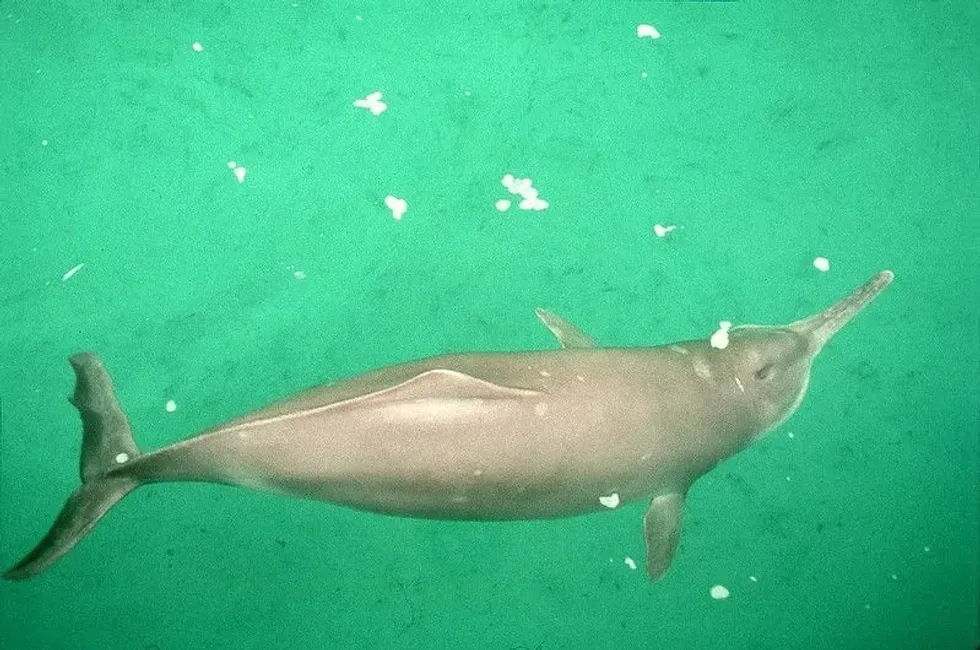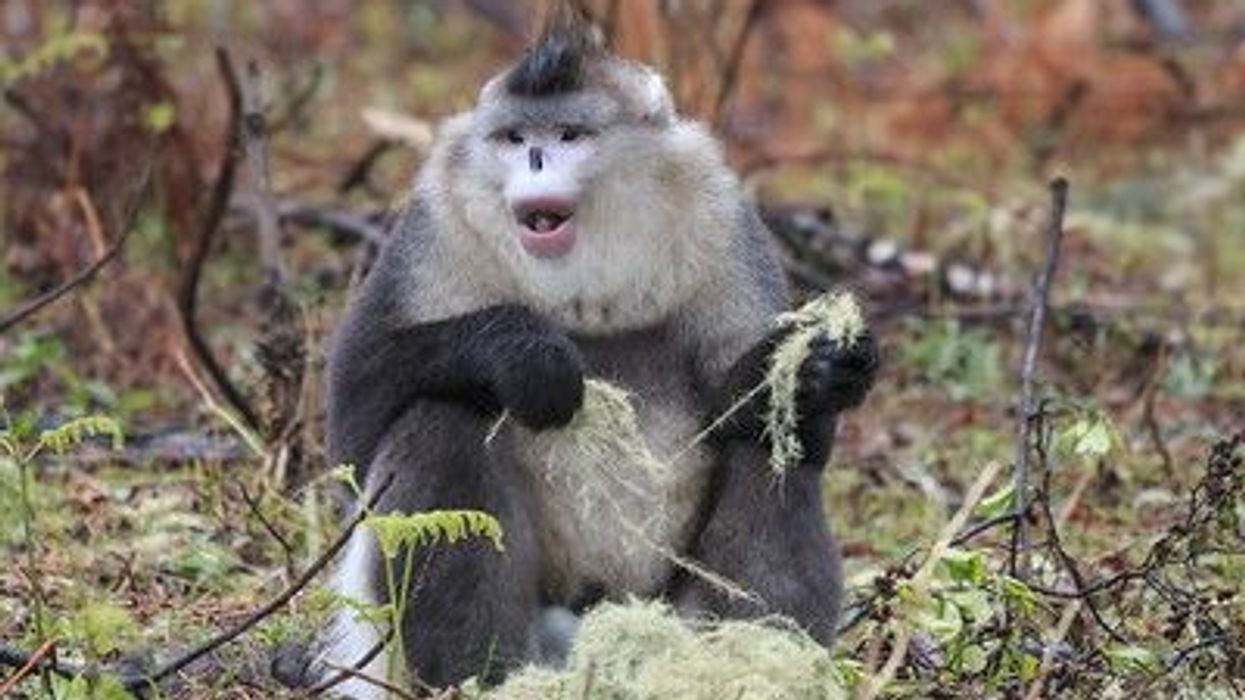Baiji dolphins (Lipotes vexillifer) were freshwater dolphins found in the Yangtze River. These river dolphins were also known as whitefin dolphin, Chinese river dolphin, or Yangtze dolphin.
These river dolphins were nicknamed Goddess of the Yangtze. Unfortunately, this species of white flag dolphin has been extinct since 2006 and comes under list of threatened species. River dolphin or baiji has been recognized as as being functionally extinct.
As per the whales and dolphin conservation experts, the Yangtze river dolphin (Lipotes vexillifer) is perhaps the first species of dolphin to feature in the list of threatened species, and eventually extinct, due to the direct impact of human activities such as fishing.
The white flag dolphin has not been spotted in many years and there are apprehensions that it has now undergone extinction.
Read on for some interesting dolphin facts about baiji, and thereafter do read our articles on harbour porpoise and fin whale as well.
Baiji Interesting Facts
What type of animal is a baiji?
Baiji is a type of freshwater dolphin. It is possibly an extinct species of river dolphins now. The Yangtze river dolphin had sharp teeth and a beaklike nose. The baiji stomach was divided into three compartments where a regular dolphin had two compartments.
What class of animal does a baiji belong to?
The baiji dolphin belongs to the mammal class. They were one of the five species of river dolphins found in the world. This species of river dolphins (popularly known as Yangtze river dolphin) is now regarded as extinct.
How many baijis are there in the world?
According to the whales and dolphin conservation experts, the baijis are a near-extinct species. In the 1950s, there were some 6000 baijis in the Yangtze river. But their population depleted drastically after that. There are some unconfirmed sightings of one or two baijis in Yangtze river, but that can not be substantiated.
Where does a baiji live?
The baijis were native to the Yangtze river in China before their feared extinction. It was the only species of river dolphins found in the Yangtze river.
What is a baiji's habitat?
These endangered river dolphins were found in the warm and temperate water zones. The baijis were found in the freshwater of river Yangtze in China.
They were also found in the fresh water lakes of Poyang and Dongting. Baijis were seen close to the sandbars, which are created at the entry point of tributaries. Sediments deposited in this water are ideal for baijis, as they are nutrient-rich and have smaller fish for their consumption.
Who do baiji live with?
Baijis were social in nature and lived in groups called schools before they were endangered. They were known to be shy and don't interact much. Their sonar system was an important part of their socializing, alerting predators about group coordination, and expressing emotions.
How long does a baiji live?
Not much is known about the baiji behavioral pattern and life span as they are very varied in human interaction. But the last found baiji some years back was calculated to be 24 years old.
How do they reproduce?
The mating rituals of the baijis are a mystery too. The ovulation in females is periodic, and the sperm density in male baijis is varied as per the season.
The mating season is believed to be twice a year, during spring and autumn. The mating process can take place between only those males and females who have attained sexual maturity.
The female baijis have a gestation period of 6-12 months after which she gives birth to one baby. Male baijis reach sexual maturity at four years and female baijis reach sexual maturity at eight years of age.
What is their conservation status?
Baijis are critically endangered, possibly extinct. The primary threat to the Baiji population was bycatch. The other protection threats were pollution, dams, vessel collision, and prey depletion due to excessive fishing.
The noise pollution around and inside the river also weakened their sonar navigation system. The dam built on the river blocked the migration of the baijis in the lakes and tributaries. Their protection status is now critically endangered or extinct.
Baiji Fun facts
What do baijis look like?
Baijis look like the cute bottle-shaped mouth dolphins we have watched in many movies. The baijis have greyish bluish-colored skin and a white underbelly. They have a broad, stocky body with round flippers.
The dorsal fin is small and triangular with a wide base and located more than halfway back. Their long beak-like mouth is slightly upturned at the tip. They have tiny eyes positioned higher up on the head.
How cute are they?
Dolphins are considered to be one of the cutest sea animals ever. These mammals are known to be friendly and caring with their offspring and others too. The baijis are intelligent, smart, and a bit aloof too.
How do they communicate?
The baiji uses echolocation to navigate and find food. They would communicate with others using whistles and other such acoustic signals.
How big is a baiji?
The baijis are large animals with a maximum length of 2.6m. They are definitely longer than many species found in the surrounding region.
How fast can a baiji swim?
The baijis are fast swimmers with a speed of 37 mph. They use that sonar system for swimming and looking for food or any danger.
How much does a baiji weigh?
The baijis weigh 92.5-368 lb. The female baijis are heavier and longer than male baijis. The average female baijis weigh 141-368 lb, and a male baiji will weigh 92.5-275 lb.
What are their male and female names of the species?
Like other dolphins, the females baijis are called 'cows', and the male baijis are called 'bulls'.
What would you call a baby baiji?
The baby baiji is called a 'calf'.
What do they eat?
The baijis eat other smaller fish. They use their long mouth to probe the muddy bottoms for food. They use echolocation to find food. They eat both surface and bottom feeders. The baijis eat fishes like carp, yellow catfish, and copper fish. They swallow the whole fish.
Do humans eat them?
Dolphin meat is considered a delicacy in some countries like Japan. But due to the near extinction of Baiji, humans can’t hunt and eat them, it is against the law.
Would they make a good pet?
The near extinction of the Baiji dolphins has caused great concern for humans. The collective industrialization and habitat loss have led to losing a rare animal on this planet.
Therefore we must look at conserving our animal and plant kingdom in their natural habitat. It wouldn't be advisable to make such a rare species our pet, you wouldn't even be able to find any if they are extinct, too.
Did you know...
Baiji dolphin is possibly the first species of dolphin to go extinct due to the impact of human behavior.
Baiji was regarded as the goddess of the Yangtze river. The fisherman and boatmen believed the baiji dolphin protected them.
According to Chinese folklore, there was a beautiful young girl who lived with her evil step father. He took the girl on a boat to sell her in the markets.
Out on the river, the man was completely smitten by the girl's beauty and tried to take advantage of her. The girl jumped into the river to protect herself and a big storm followed which sank the boat.
After the storm settled, people could see beautiful dolphins swimming in the river, which they thought was an incarnation of the girl. Thus, baiji is regarded as the symbol of peace and prosperity in the region.
During the Great Leap Forward, the people forgot the reverence with which the baiji dolphin was worshipped and it was hunted for its skin and flesh which also led to a drastic depletion of its population.
The baiji is the only member of the mammal family called Lipotidae.
Parts of baiji skeleton and stomach anatomy are unique. The baiji has three compartments in the stomach. Other dolphins have two.
The female baiji is larger than male baijis.
A group of baiji dolphins is called school, pod or herd.
The mother baiji trains its baby baiji to swim, how to raise to the surface for air, and other things. The calf of the baiji dolphin may nurse until it is 18 months old, but that time the mother baiji teaches the baby baiji to hunt for small fishes.
Why did baijis go extinct?
The Yangtze river is the third-longest and largest river in the world and the biggest in the river in Asia. The main reasons for the extinction of baiji are Chinese industrialization, excessive fishing, bycatch, water and noise pollution.
The Yangtze river is a source of livelihood for almost 12% of the world's population.
This creates enormous pressure on the ecosystem of the river and baiji’s delicate habitat too. The baiji dolphin sensitivity to noise due tod its echolocation system was a major reason why it was getting increasingly difficult for the dolphin to survive.
Why are baijis called white dolphins?
Baiji are called white dolphins because in Chinese, 'baiji' means white finned dolphin.
Here at Kidadl, we have carefully created lots of interesting family-friendly animal facts for everyone to discover! Learn more about some other mammals including spinner dolphin, or common dolphin.
You can even occupy yourself at home by drawing one on our Baiji dolphin coloring pages.








